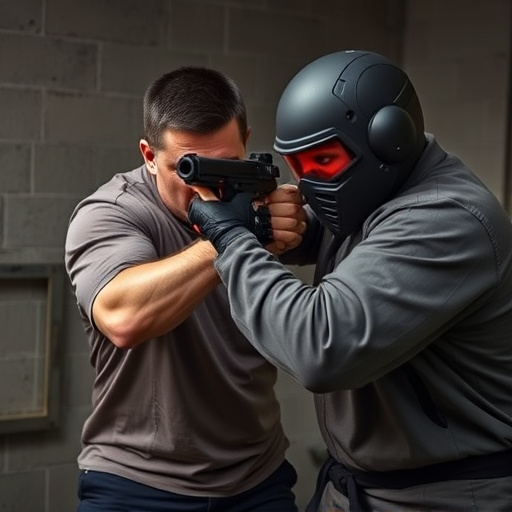Compact Stun Guns: Understanding Muscle Incapacitation Duration for Runner Safety
A well-designed compact stun gun for runners' safety can temporarily disable an attacker for 2-…….
A well-designed compact stun gun for runners' safety can temporarily disable an attacker for 2-5 minutes, providing enough time to escape or seek help. These devices offer convenient, discreet protection, with effectiveness depending on power output, target size, nerve pathways, and user proficiency. Balancing effectiveness and safety requires precise voltage settings tailored to the user's body mass. Proper training ensures optimal deployment in high-mobility scenarios.
In today’s world, self-defense tools like compact stun guns have become essential for personal safety, especially during outdoor activities. This article delves into the critical aspect of muscle incapacitation duration from stun guns, focusing on their impact and effectiveness. We’ll explore how compact stun guns play a pivotal role in enhancing runner safety, considering various factors that influence their overall performance and duration. Understanding these dynamics is crucial for individuals seeking effective self-defense strategies.
- Understanding Muscle Incapacitation: How Long Does it Last?
- The Role of Compact Stun Guns in Runner Safety
- Factors Influencing Stun Gun Effectiveness and Duration
Understanding Muscle Incapacitation: How Long Does it Last?

Understanding Muscle Incapacitation: How Long Does it Last?
When considering a compact stun gun as a personal safety measure, especially for runners or outdoor enthusiasts, one crucial aspect to understand is the duration of muscle incapacitation. Stun guns, also known as electronic control devices (ECDs), work by delivering a high-voltage, low-current electrical pulse that disrupts the nervous system’s signal transmission to muscles, causing temporary paralysis.
The length of this muscle incapacitation varies based on several factors, including the stun gun’s power output, the target’s size and physical condition, and the specific nerve pathways affected. Typically, a single stun from a well-designed compact stun gun for runners safety can render an attacker temporarily immobile for 2 to 5 minutes. This period is long enough for the user to escape or signal for help, making it a valuable tool for self-defense in high-risk scenarios.
The Role of Compact Stun Guns in Runner Safety

In today’s world, where running has become a popular form of exercise and recreation, ensuring personal safety is paramount. This is especially true for solo runners who may encounter unpredictable situations while on their routes. Here, compact stun guns emerge as a powerful tool for runner safety. Their small size allows runners to carry them conveniently, enabling them to deter potential threats without significantly impacting their mobility.
Compact stun guns are designed to be easily accessible and discreet, fitting comfortably in pockets or attached to belts. This accessibility is crucial, as it ensures that runners can respond swiftly to unexpected encounters. The immediate incapacitation duration provided by these devices offers a vital window for escape and safety, making them valuable assets for individuals prioritizing their well-being during outdoor activities.
Factors Influencing Stun Gun Effectiveness and Duration

The effectiveness and duration of a stun gun’s impact are influenced by several factors, which can vary based on the user’s intended application, be it for personal safety, like with a compact stun gun designed for runners, or law enforcement purposes. One key factor is the stun gun’s voltage output. Higher voltage typically results in a longer incapacitation period, as it delivers a more intense electric shock to disrupt muscle control. However, excessive voltage might also increase the risk of temporary or permanent physical harm, making it crucial to balance effectiveness with safety.
Another significant consideration is the target area and body mass of the individual being stunned. Smaller individuals may require lower voltage settings to achieve successful incapacitation without causing severe side effects, while larger individuals might need higher voltages to overcome their natural resistance. The user’s familiarity with the stun gun’s operation and their ability to maintain proper contact for the required duration also play vital roles in ensuring optimal effectiveness. Proper training can help users determine the most effective voltage settings for different scenarios, especially when carrying a compact stun gun designed for safety while running or in other high-mobility situations.
Stun guns, particularly their compact variants designed for runner safety, offer a powerful tool for self-defense. Understanding the duration of muscle incapacitation is key to ensuring their effectiveness. Studies show that with proper application, compact stun guns can immobilize a target for up to 30 seconds, providing enough time for escape. Several factors, including the stun gun’s power output, the user’s technique, and the target’s physical attributes, influence this duration. Armed with this knowledge, runners can make informed choices about self-defense options, choosing a compact stun gun as a reliable companion for safety during their outdoor activities.


